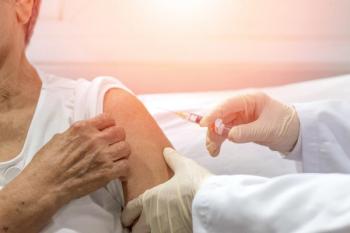
- Drug Topics January 2020
- Volume 164
- Issue 1
A Look Ahead: What to Expect from the Pharmacy Landscape in 2020
Optimism is strong around the pharmacy industry as we head into a new decade, and many believe that 2020 is going to be a pivotal year for the industry.
Optimism is strong around the pharmacy industry as we head into a new decade, and many believe that 2020 is going to be a pivotal year for the industry.
Top Trends
Raj Jhala, PharmD, Pharmacist in Charge of Saint Peters Community Pharmacy, located in Saint Peters, Missouri, said that in 2020, more and more pharmacies will be offering delivery.
“From my perspective, with Amazon entering the prescription market with PillPack, and Walmart, Costco, and CVS offering delivery, brick and mortar shops will have to move in this direction,” he said. “Every year from here on out will see a greater trend toward delivery.”
Brian Nightengale, RPh, president of Good Neighbor Pharmacy, a cooperative network of more than 4500 independently owned and operated pharmacies, said the reimbursement environment has continued to intensify and its impact on the pharmacy segment is going to become more visible in the year ahead.
“Across retail chains and independent community pharmacies, we’ve already seen poor reimbursement impact bottom lines and ultimately lead to store closures,” he explained. “2020 will be a defining year for pharmacies that have stayed complacent and those who have pushed to diversify their businesses. And this year, those who have worked to develop new solutions beyond dispensing will benefit from that decision and see opportunities for more growth.”
Ramzi Yacoub, PharmD, chief pharmacy officer at Boston-based RxSense, said as insurance plans and patients continue to try to find ways to help reduce their medical and pharmacy spend in 2020, he foresees increased enrollment in high-deductible health plans (HDHPs).
“As a result, patients will continue to look for lower cost options when purchasing prescription medications,” he said. “Patients are increasingly comparison shopping for their medications and taking advantage of prescription savings services like SingleCare to save money on their medications.”
In 2020, he also expects the continuation of health care services expanding in retail pharmacy settings as pharmacies try to increase offerings for more convenient services.
“I predict that there will be continued consolidation in the retail pharmacy landscape as chains, grocers, and others adjust their footprints to the right size,” Yacoub said. “We’ve already seen 2 of the largest chains announce strategic store closings. Grocers like Raley’s have closed some of their pharmacies and HealthPartners is preparing to close 30 local pharmacies. We also expect to see disruptors in the pharmaceutical industry, such as Roman, Simple Health, Hims and Capsule, continue to focus on the consumer experience.”
Benjamin McNabb, PharmD, owner at Love Oak Pharmacy in Eastland, Texas, believes more pharmacies will enter into new care management and community health worker roles in 2020.
“These are exciting new opportunities because health plans typically spend far more on care management than prescription drugs and industry leaders believe pharmacies can do it much more efficiently,” he said. “To provide these enhanced services, I encourage pharmacies to join an enhanced services network like CPESN(R) and leverage a Pharmacist eCare Plan platform.”
McNabb said Love Oak Pharmacy has used FDS ENGAGE and FDS MYDATAMART to improve patient medication adherence and increase revenue by nearly $500,000.
With things getting tighter with reimbursement, Jhala believes there will be a consolidation of the various branches of pharmacies.
“New hub-style pharmacies will emerge-where there’s 1 large pharmacy that caters to more of the patient population with different offerings and features,” he said. “With more and more prescriptions moving online, we’ll see the growth of these large pharmacy offerings.”
Brian Roberts, CEO of PipelineRx, which offers telepharmacy services and a technology platform designed to optimize clinical pharmacy, said in 2020, he expects the transition to thinking and deploying pharmacists in a more strategic way to continue.
“Specifically, the regulations and focus on antimicrobial management will require greater pharmacist engagement and augmentation,” he says. “We also expect 2020 will see an increasing awareness and use of personalized or genetic screening to inform the management of complex drug protocols.”
As the Centers for Medicare and Medicaid Services (CMS) continue to encourage bundled care and other forms of value-based care, Roberts believes the effective pharmacist-led medication review and verification will be increasingly important to enable health systems to reduce medication variability.
Tech Time
Cathy Kuhn, director of strategy consulting with Updox, president of American Pharmacists Association (APhA) Academy of Pharmacy Practice Management and board trustee with APhA, discussed 2 merging technologies that will become increasingly important in 2020 (and the rest of the decade): secure text messaging and video chat.
Innovative pharmacists are already using these to offer medication therapy management and inform patients about immunizations and point-of-care testing, in addition to medication follow-ups.
“These tools can help pharmacists engage existing patients by meeting them where they are-on their phones,” she said. “In addition, patients of all ages greatly appreciate the flexibility and convenience of text messaging and video conferencing.”
For example, patients enjoy receiving personalized text and email reminders about refills. Likewise, patients with chronic conditions appreciate the ability to connect with their pharmacist via their smartphone if they have a question about a new medication or need to leave a message.
In the past, a significant pain point for pharmacists has been the ease of transferring patient data from various health care settings to the pharmacy. In 2020, Nightengale thinks the industry will see some big plays in supporting data connectivity between care team members.
“In addition to data sharing, there is a push for independents to meet patients where they are, specifically online.
“Technology, such as social media and mobile apps, has aided in the pharmacist’s role and expanded their reach,” he says. “It has allowed the pharmacist’s knowledge to extend from the pharmacy directly to the hands of their patients, no matter where they are, to create a better patient experience and improve adherence. We expect technology to impact the overall customer experience model and increase the importance of connecting the pharmacy’s physical and digital presence.”
On the pharmacy side, Jhala said it’s going to be easier for independent pharmacy owners to compete against big chains as they innovate and develop new tech. On the patient side, he said it’s going to make it easier for the millennial generation as they age to order and receive their medications.
Yacoub said as telehealth adoption continues to increase, patients are becoming increasingly more accustomed to using these services.
“The continued movement to meet the customers where they are and engage with them according to their preferences will drive retailers to evolve and improve their technology,” he said. “From CVS launching CarePass nationwide to provide delivery of medications, to Costco and Instacart’s pilot to provide local delivery of medications, you will also see more movement from old mainframe legacy systems to the cloud. This should enable more timely data to be shared with the pharmacy at the point of sale, resulting in improved clinical outcomes at a much lower cost.”
Roberts expects to see a rise in longitudinal medication records this year. As opposed to EHRs that service inpatient settings, medication management platforms create a singular source for medications that follow the patient through all settings of care, from inpatient to long-term care or home health.
“This comprehensive view is needed to address preventable medication errors of contraindication, duplication and omissions, and to support focused review and management of antibiotic therapies across care settings to combat resistance,” he said.
New Policies
Ken Whittemore Jr., vice president of professional & regulatory affairs for Arlington, Virginia-based Surescripts, an information technology company that supports e-prescriptions between health care organizations and pharmacies, said NCPDP SCRIPT v2017071 is the topic that leads all of its conversations, as the industry prepares for CMS’ upcoming deadline.
Beginning January 1, 2020, all electronically transmitted prescriptions must be sent using the new SCRIPT Standard version 2017071, replacing SCRIPT Standard 10.6.
“Though the transition to the new standard is complex, the benefits are clear: it will modernize electronic prescribing and medication history, improve patient safety and prescription accuracy, and create workflow efficiencies for clinicians and pharmacists,” he said. “NCPDP’s SCRIPT v2017071 will improve the e-prescribing process in hundreds of ways, many of which are game changers for pharmacy staff.”
Whittemore shared that enhancements to the SCRIPT standard fall into 2 categories: 1) the incorporation of new and/or enhanced data segments, elements, and codes to existing message types, such as new prescriptions; and 2) the addition of new message types, such as the ability to transfer electronic prescription information between pharmacies (RxTransfer), or for physicians to proactively set messages that tell pharmacy staff who to call for refill or for a follow-up appointment (FollowUp Prescriber).
An expected new policy to look out for is the potential for pharmacists to be considered health care providers. Yacoub noted this would be a significant win for the pharmacy community, improving patient care and increasing access to much-needed services.
“After the last few years of vertical integrations-with retail pharmacy deals such as Walgreens and Rite Aid-I expect hospital mergers to see smaller scale deals occurring in 2020, primarily focusing on adding capabilities to improve the customer experience and enhancing their specialty pharmacy offerings,” he said.
A policy about opioid management may also come into play in 2020. Roberts noted that although CMS has not mandated opioid management in an inpatient setting or tied reimbursement penalties to this, it is a likely outcome of the current opioid challenge the United States faces.
“Fortunately, health plans and employers are very focused on this, as are state governments creating an important opportunity to support the proper use of these medications through an integrated technology and service platform,” he said. “This allows hospitals to maintain opioid stewardship programs without having to hire additional in-house staff to manage these programs.”
Michael Schneider, a principal at Avalere Health, a health care consulting firm said the Medicare Part D benefit redesign is potentially the biggest change as Medicare Part D members could have a maximum out-of-pocket cost./p>
“Congress aimed to make drugs more affordable to those in Part D plans, and it will affect drug pricing directly,” he said. “The interpretation and understanding of new laws will have a significant impact on PBMs and their clients. I expect that in 2020 we will see how pharmaceutical manufacturers and Medicare Part D plan sponsors respond to increased liability expected the following year as the pharmacy industry likely won’t see changes for business until 2021.”
A Peek into the 2020’s
By 2030, the industry is expected to undergo even more dramatic changes, with technology playing a bigger role than ever before.
McNabb expects the future of pharmacy to be in value-based payment (VBP) models and addressing social determinants of health.
“New VBP models are incentivizing pharmacies to approach patient care much more comprehensively and require pharmacies to move beyond dispensing,” he said.
Nightengale said the reimbursement environment is failing community pharmacies, and that should change in the next 10 years.
Still, the biggest change is expected to come about with more reliance on machine learning and artificial intelligence, according to Roberts.
“These systems should not only replace routine tasks such as patient reminders, physician communications, and direct intervention when required, but also proactively identify high-risk patients for more targeted review and interventions,” he said.
Articles in this issue
almost 6 years ago
Lefamulin (Xenleta) for Community Acquired Bacterial Pneumoniaalmost 6 years ago
The 'Unattainable Triangle' of Community Pharmacyalmost 6 years ago
Pharmacy Trends in 2020 and Beyond: Preparing for a New Decadealmost 6 years ago
What Pharmacists Are Saying About Stressalmost 6 years ago
What Pharmacists Need to Know About Psoriasis Medicationsalmost 6 years ago
4 Pharmacy New Year’s Resolutions For 2020almost 6 years ago
Addressing the Opioid Crisis in 2020almost 6 years ago
An Update on Pharmacists’ Vaccination Authorityalmost 6 years ago
Educating Patients on the Latest Diabetes TechnologyNewsletter
Pharmacy practice is always changing. Stay ahead of the curve with the Drug Topics newsletter and get the latest drug information, industry trends, and patient care tips.


















































































































































